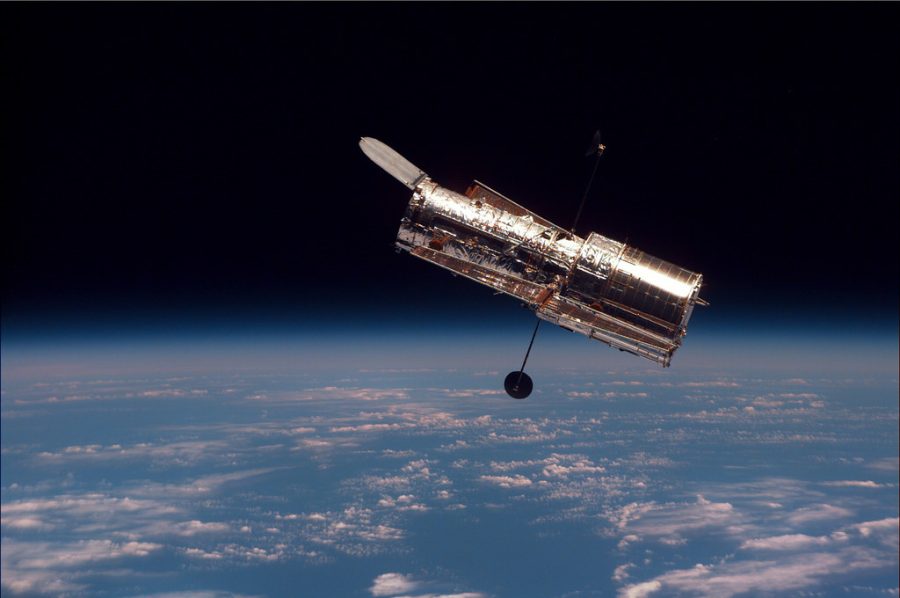NASA finds farthest individual star ever spotted
April 9, 2022
A team of researchers detected light from the farthest individual star ever seen using NASA’s Hubble Space Telescope last month.
The newly discovered blue star was nicknamed Earendel, or “morning light” in old English, a name inspired by author J.R.R. Tolkien’s fantasy writings.
The discovery of Earendel broke the previous record for the farthest star ever spotted and has people celebrating worldwide. A giant blue star, Icarus, held the previous record for being the farthest star at 9 billion light-years away. Earendel was discovered to be 12.9 billion light-years away from Earth.
Distant galaxies tend to look like blended blurs of light, so the discovery of Earendel has been called a “cosmic coincidence” by NASA astronomers. Spotting Earendel was made possible with gravitational lensing, according to Brian Welch, a Ph.D. candidate at Johns Hopkins University and lead author of Earendel’s study appearing in Nature.
“If a massive object is at exactly the right place between us and a more distant object, light from that distant object will travel along the gravitational space-time curvature,” Michelle Starr of Science Alert wrote.
According to Starr, gravitational lensing is similar to “the effect of an absolutely enormous magnifying glass: The light from the distant object may be smeared and distorted, but it’s also magnified and often duplicated.”
Usually, a lensed galaxy is only magnified by factors of up to ten. However, in the case of Earendel, the alignments were ideal, and the lensed galaxy was magnified by a factor of thousands.
The “massive object” in the team’s discovery was a cluster of galaxies which magnified the light emitting from Earendel.
Current data suggests that Earendel is “50 times the size of our sun and an estimated 1 million times brighter,” according to PBS. The star existed for a few million years and then exploded as a supernova.
The next step for Earendel’s research team is to assess whether their discovery is a single star or actually just two stars close to one another. The team will use the recently launched James Webb Space Telescope to further observe the star. The Webb telescope is hundred times more powerful than the Hubble telescope.
The Webb telescope may be able to uncover the temperature and mass of Earendel more concretely.
“Webb will even allow us to measure its chemical composition,” Sune Toft, coauthor of the study, said. “Potentially, Earendel could be the first known example of the Universe’s earliest generation of stars.”
The newly discovered star has opened doors to countless new hypotheses about the origin of the universe and of the formation of certain elements, as Earendel appears to its observers “as it did when the universe was only 7% of its current age,” according to NASA.
“Earendel existed so long ago that it may not have had all the same raw materials as the stars around us today,” Welch said.
“Studying Earendel will be a window into an era of the universe that we are unfamiliar with, but that led to everything we do know.”
If the Webb telescope finds Earendel to be composed of primordial hydrogen and helium, then it would validate the Population III star hypothesis. Population III stars are believed to be the first stars to form after the Big Bang and are hypothesized to be metal-free.
The Webb telescope may even be helpful for locating distant stars that are out of reach of the Hubble telescope. Although the Hubble telescope succeeded in finding galaxies up to 400 million light-years away, it has difficulty locating individual stars.
Earendel is only the start of many future discoveries, hopes its research team.
“We are literally understanding where we came from because we’re made up of some of that stardust,” NASA astrophysicist Jane Rigby said.








